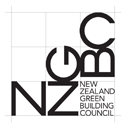Quintex - Sustainability

Today developers are much more than just simple builders, rather the architects of healthy, efficient and productive buildings helping create healthier, more resilient communities.
Quintex Properties Limited, as a member of the New Zealand Green Building Council, regularly strives to create sustainable developments that by incorporating smart growth principles into the project development process, whether a single building or campus.
We work closely with key stakeholders to ensure all our developments provide a community footprint that will stand the test of time and become a legacy for future generations.
To that end, all of Quintex Properties Limited’s developments include, or adhere to, the following sustainable features:
- Large windows to maximise the natural light to, and outlook from, each room.
- Glazing designed to minimise external noise pollution to provide a comfortable indoor environment.
- Double glazing and Low E glazing to minimise thermal gains and losses.
- External extraction systems in kitchens and bathrooms to remove airborne moisture and ensure apartments are easier to heat.
- Minimal car parking to encourage the use of readily available public transport.
- Environmental Choice Approved low toxicity interior paints to ensure the indoor air quality.
- Locally manufactured materials where appropriate to reduce transportation energy.
- Reclaimed storm water to irrigate common landscaped areas.
- Recycling strategies to minimise construction waste in line with the REBRI guidelines.
- Located near high frequency public transport routes, encouraging the use of alternative transportation.
- Bicycle friendly, through the provision of bike parks, encouraging the use of alternative transport.
- Energy efficient through the use of CF and LED lighting.
- Mechanical ventilation to reduce airborne moisture levels and ensure there is a constant supply of fresh air to each apartment, without the need to open windows.
- Dual flush toilets and lower flow tapware to limit water wastage.
- Sediment and erosion controls during construction to prevent polluting run off to adjacent eco systems and storm water networks.
